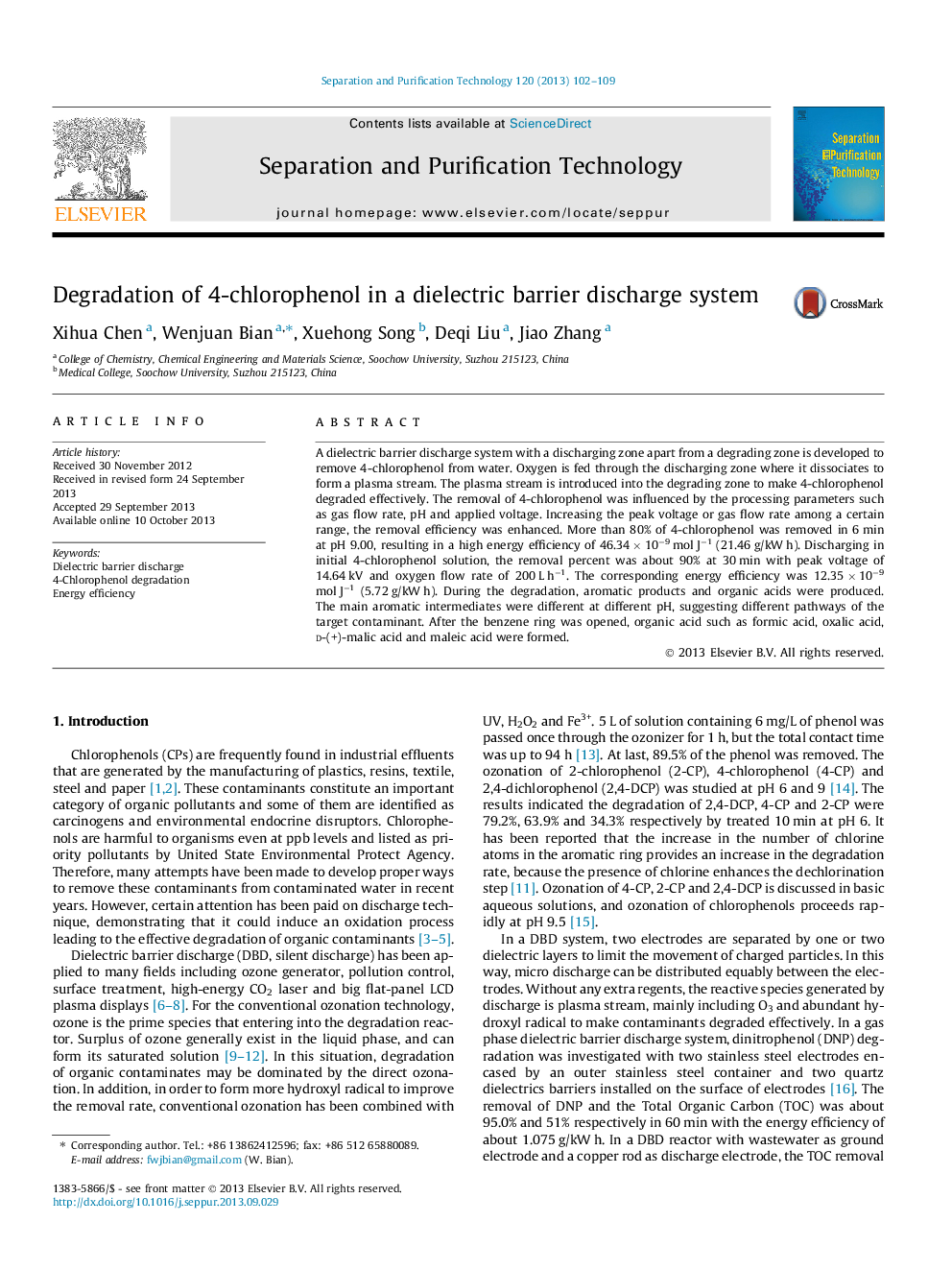| کد مقاله | کد نشریه | سال انتشار | مقاله انگلیسی | نسخه تمام متن |
|---|---|---|---|---|
| 641255 | 1456999 | 2013 | 8 صفحه PDF | دانلود رایگان |

• 4-Chlorophenol was effectively degraded by a dielectric barrier discharge.
• Removal percent of 90% was achieved in 30 min with energy efficiency of 5.72 g/kW h.
• Increasing voltage, gas flow rate and initial pH could enhance the removal rate.
• Ozone and OH were determined in the degradation process at different initial pH.
• The aromatic intermediates and ring-opening products were identified.
A dielectric barrier discharge system with a discharging zone apart from a degrading zone is developed to remove 4-chlorophenol from water. Oxygen is fed through the discharging zone where it dissociates to form a plasma stream. The plasma stream is introduced into the degrading zone to make 4-chlorophenol degraded effectively. The removal of 4-chlorophenol was influenced by the processing parameters such as gas flow rate, pH and applied voltage. Increasing the peak voltage or gas flow rate among a certain range, the removal efficiency was enhanced. More than 80% of 4-chlorophenol was removed in 6 min at pH 9.00, resulting in a high energy efficiency of 46.34 × 10−9 mol J−1 (21.46 g/kW h). Discharging in initial 4-chlorophenol solution, the removal percent was about 90% at 30 min with peak voltage of 14.64 kV and oxygen flow rate of 200 L h−1. The corresponding energy efficiency was 12.35 × 10−9 mol J−1 (5.72 g/kW h). During the degradation, aromatic products and organic acids were produced. The main aromatic intermediates were different at different pH, suggesting different pathways of the target contaminant. After the benzene ring was opened, organic acid such as formic acid, oxalic acid, d-(+)-malic acid and maleic acid were formed.
Journal: Separation and Purification Technology - Volume 120, 13 December 2013, Pages 102–109